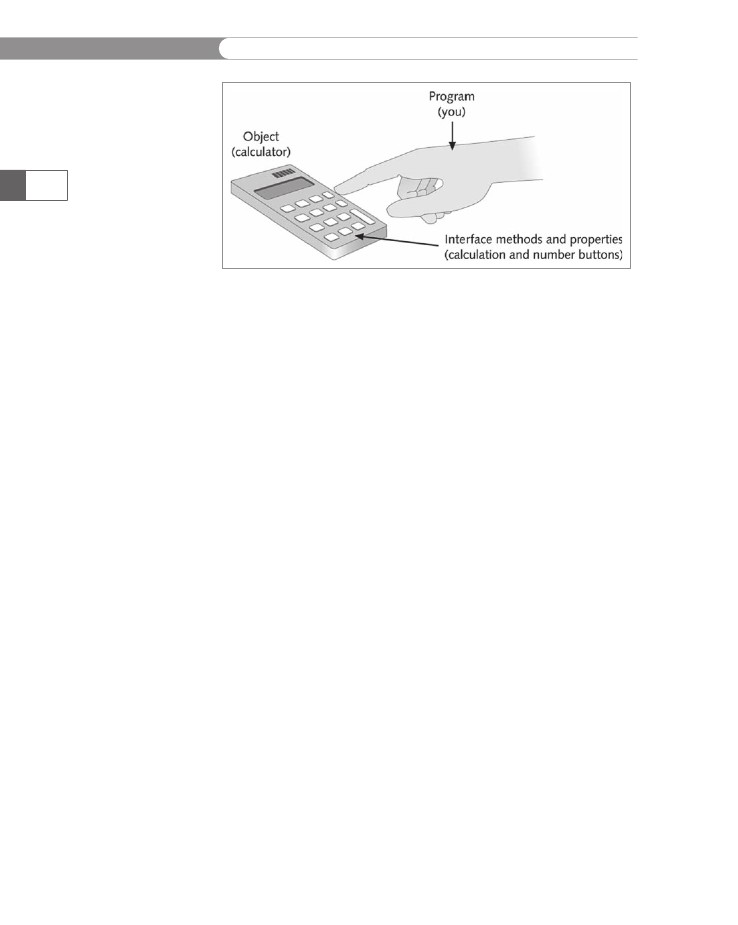
- •Initializing with Constructor Functions . . . . .
- •Into a Web page as a separate section. Although JavaScript code can
- •Is that standard php script delimiters are guaranteed to be available
- •In the block. Any text or lines between the opening /* characters and
- •2.7541 Are not integers; they are floating-point numbers. A floating-
- •Value 300
- •Is a value of 2.5, because 6 goes into 15 exactly 2.5 times. But if you
- •IsEven.Php.
- •Ing example,
- •Ing curly brace is on its own line following the function statements.
- •In php 3 and earlier, it was necessary to put a function definition
- •Is called an iteration. When the conditional expression evaluates
- •Including Files
- •13. Close your Web browser window.
- •Including Files
- •In php, you can also use two operators to combine strings. The first
- •Xhtml source code gen-
- •Input. Php provides several functions for manipulating the case of a
- •Is uppercase. If you need the reverse of ucfirst(), the lcfirst()
- •In some situations, you will need to find and extract characters and
- •Information Interchange, or ascii, which are numeric represen-
- •In comparison, the following preg_match() function returns a value
- •In the pattern is optional. The following code demonstrates how to
- •Values; any strings you validate against a regular expression must
- •Value of 1 because the top-level domain contains a valid value of .Com.
- •Is submitted using the “post” method, the form data is embedded in
- •Validating String Data
- •Xhtml tags or character entities. The message field is a text string
- •Value of the header element. For example:
- •Xhtml code within a php script section.
- •Is typically the person who created the resource. Otherwise, the net-
- •If even a single character of the Web page is sent prior to sending
- •Variables to the file_put_contents() function.
- •Xhtml hyperlink. To download a file from outside the xhtml
- •If...Else statement to display the appropriate version of the mes-
- •Iterating Through an Array
- •Iterating Through an Array
- •In Chapter 2, you learned how to use a foreach statement to iterate
- •Iterating Through an Array
- •Iterating Through an Array
- •In comparison, the following code declares and initializes
- •If ((!file_exists("MessageBoard/messages.Txt"))
- •Values from the array to create a thumbnail gallery of images in which
- •Introduction to Databases
- •Including php, allow you to create Web pages that can read and write
- •Introduction to Databases
- •Information that can be organized into ordered sets of data, and
- •Information. Each recipe in a recipe database, for instance, is a single
- •Introduction to Databases
- •Index, which identifies records in a database to make retrievals and
- •In a single table. However, you might want to break the information
- •Into multiple tables to better organize it into logical sets. Another
- •Information in one of the tables confidential and accessible only by
- •Is the employee information table from Figure 7-1. The related table
- •Is a payroll table that contains confidential salary and compensation
- •Information. Notice that each table contains an identical number of
- •Introduction to Databases
- •Introduction to Databases
- •In a junction
- •Introduction to Databases
- •In a relational format is called a relational database management
- •Is a standard data manipulation language among many dbmSs.
- •Into the query area at the top of the screen or by dragging tables and
- •It is important to understand that even though many dbmSs sup-
- •Introduction to Databases
- •If you ever
- •Is. In comparison, the bigint data type stores integer values between
- •5 Rows in set (0.00 sec)
- •Int);[enter ]
- •Important, these two tabs can cause you to lose all of the data in the
- •Internet Explorer to export the table, click the Save button in the File
- •Ifies the table being changed and the change to make.
- •It easier for you to write php code that can be used with a variety of
- •Information about queries that match one of the following formats:
- •Various types of actions, depending on the type of query.
- •Include fields for the date and time of the flight, flight number, and
- •In the ChineseZodiac folder and upload the file to the server. Open
- •Including white space,
- •Information on a Web server. When you start a new session, the
- •Introduction to Object-Oriented Programming
- •Introduction to Object-Oriented
- •Variables associated with an object are called properties or attributes.
- •In the Loan object example, a function that calculates the number of
- •Introduction to Object-Oriented Programming
- •Introduction to Object-Oriented Programming
- •Include instances of objects inherit the object’s functionality.
- •In this chapter, you will create the Web site for an online order form
- •In an online store application. The application includes information
- •Ity of building a working online store. Online store classes are very
- •Information and products. The OnlineStore class requires that store
- •Information is stored in a table containing six fields: storeId, name,
- •Information. Instead, the class simply uses session iDs to keep track
- •Variable and function as necessary, without bothering with all this
- •In a class
- •Is developed. Imagine what would happen if Microsoft distributed
- •Ing class is invalid because it does not include an access specifier:
- •If they will not be supported by future xhtml versions or are not
- •Xhtml standards. To review the guide of current w3c css specifi-
- •Information to remind yourself or others of what the code is doing. A
- •Xhtml document to the external style sheet. This link informa-
- •If you select Apache from the WampServer menu and select Service
- •Ing code uses the number_format() function to add comma separa-
- •In data that a user submits to a php script.
- •Value of “On” and the display_startup_errors directive is assigned
- •Instead. By looking at the source code, you could see that the value of
- •Ing engine can even help locate logic errors.
- •In Chapter 8, along with the equivalent mssql_* functions, where
- •Inline styles, 632
- •Xhtml, 620–635 (continued)
Understanding
Encapsulation
Objects
are encapsulated,
which means that all code and required
data
are contained within the object itself. In most cases, an encap-
sulated
object consists of a single computer file that contains all code
and
required data. Encapsulation places code inside what program-
mers
like to call a “black box.” When an object is encapsulated, you
cannot
see “inside” it—all internal workings are hidden. The code
(methods
and statements) and data (variables and constants) con-
tained
in an encapsulated object are accessed through an interface.
An
interface
refers
to the methods and properties that are required
for
a source program to communicate with an object. For example,
the
interface elements required to access a Payroll
object
might be
a
method named calcNetPay(),
which calculates an employee’s net
pay,
and properties containing the employee’s name and pay rate.
When
you include encapsulated objects in your programs, users can
only
see the methods and properties of the object that you allow them
to
see. By removing the ability to see inside the black box, encapsula-
tion
reduces the complexity of the code, allowing programmers who
use
the code to concentrate on the task of integrating it into their
programs.
Encapsulation also prevents other programmers from
accidentally
introducing a bug into a program, or from possibly even
stealing
the code and claiming it as their own.
You
can compare a programming object and its interface to a hand-
held
calculator. The calculator represents an object, and you represent
a
program that wants to use the object. You establish an interface
with
the calculator object by entering numbers (the data required by
the
object) and then pressing calculation keys (which represent the
methods
of the object). You do not need to know, nor can you see,
the
inner workings of the calculator object. As a programmer, you are
concerned
only with an object’s methods and properties. To continue
the
analogy, you are only concerned with the result you expect the
calculator
object to return. Figure 10-2 illustrates the idea of the cal-
culator
interface.
559Introduction to Object-Oriented Programming

CHAPTER
10
Developing
Object-Oriented PHP
560
Figure
10-2
Calculator
interface
Microsoft
Word®
is
another example of an object and its interface.
Word
itself is actually an object made up of numerous other objects.
The
program window (or user interface) is one object. The items
you
see in the interface, such as the menu and toolbars, are used
to
execute methods. For example, the Bold button on the toolbar
executes
a bold()
method.
The text of your document is the data you
provide
to the program. You can use Word without knowing how its
various
methods work; you only need to know what each method
does,
and provide the data (text) and execute the appropriate meth-
ods
when necessary. In the same way, when using objects in your
payroll
code, you only need to provide the necessary data (such as an
employee’s
gross pay) and execute the appropriate method (such as
the
calcNetPay()
method).
Object-Oriented
Programming and Classes
In
object-oriented programming, the code, methods, attributes, and
other
information that make up an object are organized into classes.
Essentially,
a class is a template, or blueprint, that serves as the basis
for
new objects. When you use an object in your program, you actu-
ally
create an instance of the class of the object. An instance
is
an
object
that has been created from an existing class. An instance of an
object
is the equivalent of a house built from a blueprint. When you
create
an object from an existing class, you instantiate
the
object.
Later
in this chapter, you will learn how to create, or instantiate,
an
object from built-in PHP classes and from custom classes that
you
write yourself. However, as an immediate example, consider an
object
named BankAccount
that
contains methods and properties you
might
use to record transactions associated with a checking or sav-
ings
account. The BankAccount
object
is created from a BankAccount
class.
To use the BankAccount
class,
you create an instance of the
